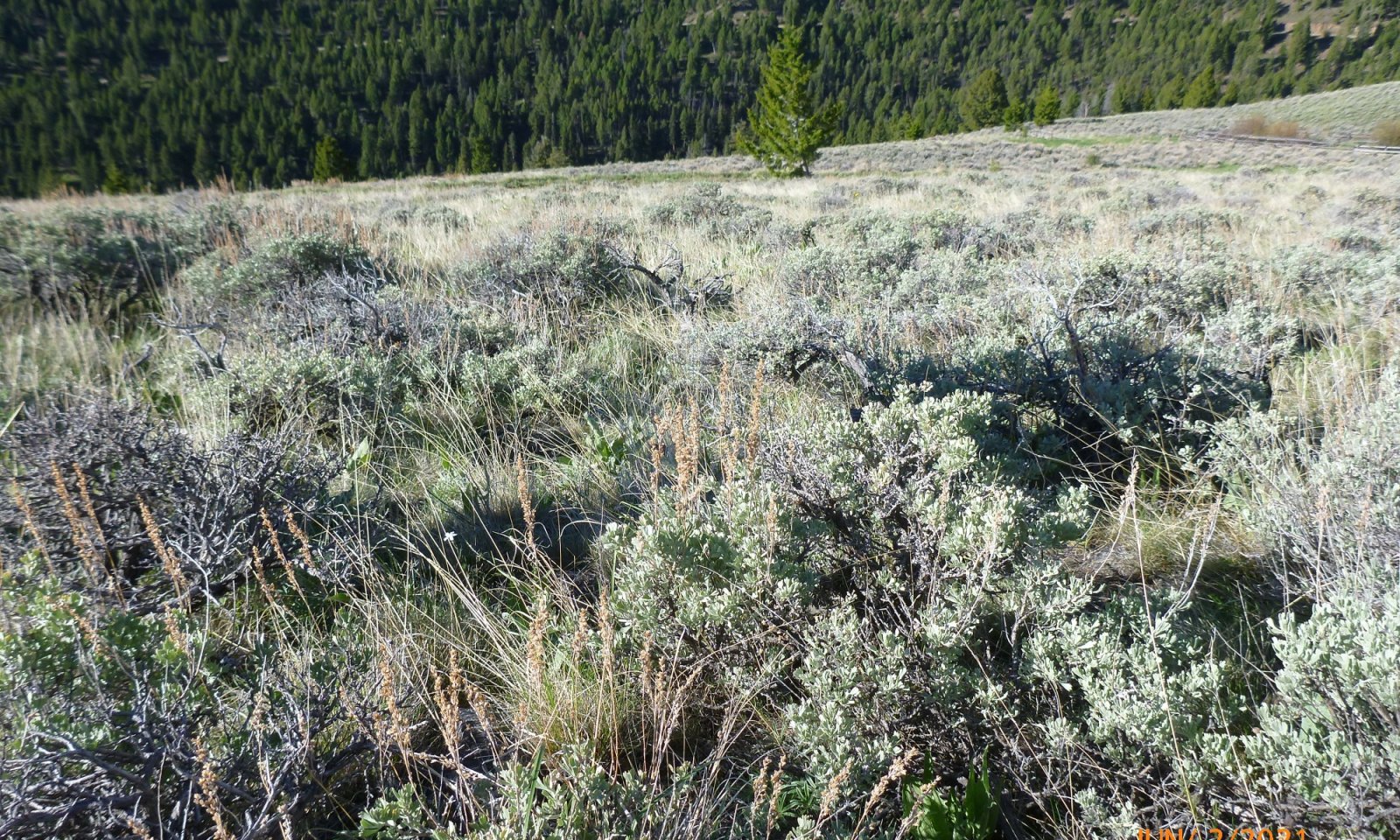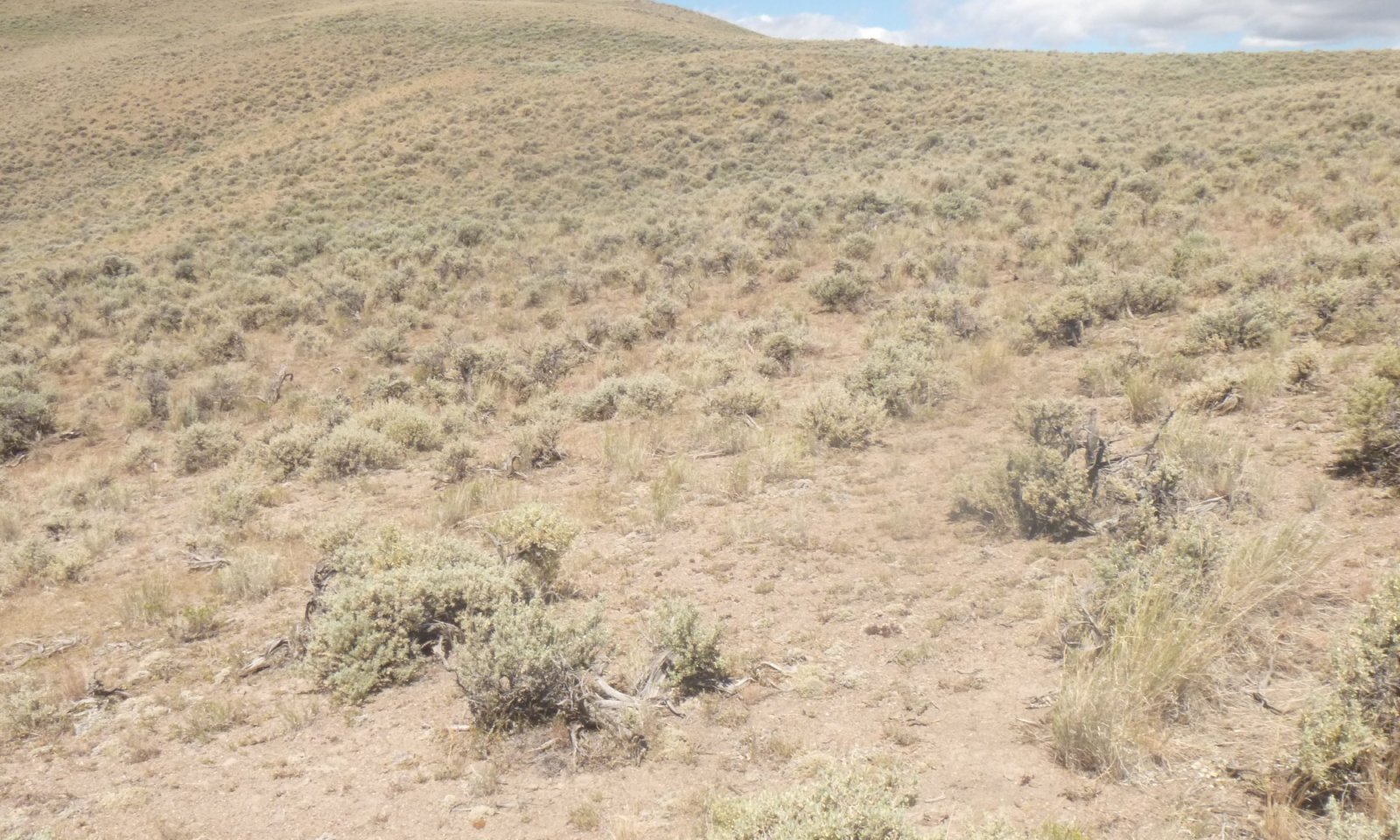
Skeletal 15-19 Inch Precipitation Zone Lost River Mountains
Scenario model
Current ecosystem state
Select a state
Management practices/drivers
Select a transition or restoration pathway
- Transition T1A More details
- Transition T1B More details
- Restoration pathway R2A More details
- Restoration pathway R3A More details
-
No transition or restoration pathway between the selected states has been described
Target ecosystem state
Select a state
Description
The Reference state consists of three plant communities: The Mountain Big Sagebrush and Idaho fescue community, the Mixed Sagebrush and Bluebunch Wheatgrass community, and the Mountain Big Sagebrush/Mixed Bunchgrass community. The Mixed Sagebrush community (1.2) includes mountain big sagebrush, Wyoming big sagebrush (Artemisia tridentata ssp. wyomingensis), black sagebrush (Artemisia nova), and little sagebrush (Artemisia arbuscula). The Mountain Big Sagebrush and Mixed Bunchgrass community consists of Idaho fescue, bluebunch wheatgrass, and Geyer's sedge (Carex geyeri) in the understory.
The Mountain Big Sagebrush and Idaho Fescue community is the most common community in the Reference state, and canopy cover is generally balanced between the sagebrush overstory and the bunch grass understory. The Mixed Sagebrush community often occurs as a result of very localized site condition variation. Small changes in surface fragment composition, slope shape, and site-specific effective precipitation can allow for the establishment of several additional overstory shrub species outside of mountain big sagebrush. The composition and occurrence of shrub species in the mixed shrub community are variable and site-specific.
Characteristics and indicators
The indicators showing a shift between communities in the Reference state are driven by the composition and foliar cover of shrub and grass species. In the primary community, Idaho fescue is the most prominent understory grass species, both in foliar cover and contribution to annual production. Community 1.2 has a higher canopy cover of bluebunch wheatgrass, however Idaho fescue may still be present at varying extents. This community can also have a mix of sagebrush species in the overstory canopy. The understory of community 1.3 will have Geyer's sedge present, usually co-dominating the understory with Idaho fescue and bluebunch wheatgrass.
Low-severity disturbances and slight differences in localized conditions are the primary drivers influencing the understory canopy cover of grass species. Severe or frequent fire disturbances at sites tend to shift towards more fire-resilient and resistant species such as Geyer's sedge and bluebunch wheatgrass. Sites found at the higher end of the effective precipitation range tend to favor communities 1.1 and 1.3.
Resilience management
The Reference state is overall moderately resilient. In well-established communities, resilience towards climatic disturbances such as drought is high. Existing in the upper end of the 15 to 19 inch effective precipitation range aids in resistance to drought conditions and communities 1.1 and 1.2 are comprised of many drought resistance species.
Resilience to moderate or high severity fire is low. Mountain big sagebrush produces large quantities of fine fuel and is susceptible to stand destroying fires. If the disturbance is severe enough, this can initiate transition from the Reference state to the Disturbed state.
Submodel
Description
The Grazed state of the Skeletal 15 to 19 inch ecological site has one major community. The Grazed state is a mechanism of chronic defoliation from grazing pressure by agricultural grazing, natural grazing, or a combination of the two. The transition from the Reference state to the Grazed state occurs when understory grasses of the Reference state, such as Idaho fescue and bluebunch wheatgrass experience chronic defoliation to the point that they are replaced by more grazing tolerant species such as Sandberg bluegrass (Poa secunda) and rhizomatous wheatgrasses. Without managed grazing and rest, it is difficult to restore this state to the reference.
Production in this state is lower and shifts more towards the shrub functional group. This state is also more susceptible to invasive species establishment resulting from the removal of Reference state species competition and hoof disturbance to the soil.
Characteristics and indicators
The primary indicator of the Grazed state is a shift in the compositional structure of the understory grass species. The bunchgrasses found in the Reference state (bluebunch wheatgrass and Idaho fescue) are removed through chronic defoliation and replaced with more grazing tolerant species such as Sandberg bluegrass and rhizomatous wheatgrasses like slender wheatgrass (Elymus trachycaulus). There is often also an increase in invasive species in this state as opportunities for establishment are created as the native species decrease. Soil disturbance from hoof traffic can also increase invasive species recruitment.
Resilience management
The Grazed state is moderately resilient. Most species present in this state are drought tolerant and response to frequent or severe fire varies by plant. Replacement of native vegetation through chronic defoliation from grazing increases opportunities for invasive species to establish. The greater the canopy cover of invasive species, the lower the resilience of the site.
Submodel
Description
The Disturbance state occurs when a natural or anthropogenic disturbance removes the overstory vegetation at a Skeletal 15 to 19 inch ecological site. These disturbances can include severe or frequent fire, flooding, prolonged periods of drought, intense grazing with hoof-related disturbance, insect and disease, and mechanical removal. The most common disturbance to impact this ecological site is severe or frequent fire. Fire removes the shrub overstory and the grass and forb functional groups become solely dominant. This can occur in small patches of a mosaic burn pattern, or in large spatial areas from severe fire events.
Characteristics and indicators
The Disturbance state is indicated by a lack of shrub overstory or a shrub overstory that consists of disturbance-tolerant species such as yellow rabbitbrush (Chrysothamnus viscidiflorus). The understory can maintain many of the bunchgrasses and forbs found in the Reference state such as Idaho fescue, bluebunch wheatgrass, and Geyer's sedge which can recover much more quickly following disturbance events. The composition of this state may also include invasive species as the disturbance opens opportunities for establishment.
Resilience management
This state is moderately resilient. Many species found in this state are drought tolerant. Continued disturbance can perpetuate this state, increasing time before the overstory can recover to pre-disturbance canopy structure and composition. This state loses resilience as a result of increased invasive species establishment following a disturbance.
Submodel
Mechanism
Transition from the Reference state to the Grazed state is a mechanism of intensive grazing practices that result in chronic defoliation of the understory vegetation. Over time, species like bluebunch wheatgrass and Idaho fescue are not able to recover from defoliation and the total canopy cover of that species will decrease on a site. In the absence of these species, grazing-tolerant plants such as Sandberg bluegrass will increase in canopy cover and production. The remaining bluebunch wheatgrass and Idaho Fescue will be concentrated under the overstory shrub cover.
Constraints to recovery
Constraints to recovery include:
o Continued improper grazing techniques that result in chronic defoliation of vegetation
o Prolonged periods of drought that diminish regeneration of desired species
o Loss of nutrient-rich topsoil due to increased erosion
o Establishment of invasive species
Context dependence
Restoration efforts can be greatly influenced by precipitation patterns. Successful regeneration of Reference state understory species is highly dependent on moisture received post-restoration efforts. Rates of successful establishment of Idaho fescue and bluebunch wheatgrass increase when available moisture is high during critical regeneration periods (Zlatnik, 1999; Howard, 1997).
Mechanism
The transition from the Reference state to the Disturbed state is a mechanism of frequent or severe disturbances that remove the overstory shrubs on a given site. The most common disturbance that results in the loss of the shrub overstory is high-intensity fire. Mountain big sagebrush is sensitive to all but the lowest severity fire, generally resulting in stand replacement. Since 1900, fire exclusion and removal of fine fuels through grazing have increased fire return intervals and increased the likelihood of more severe fire events that are often stand-destroying (Gucker, 2006).
Constraints to recovery
Constraints to recovery include:
o Frequent disturbances before recovery has been completed
o Prolonged periods of drought that diminish regeneration of desired species
o Loss of nutrient-rich topsoil due to increased erosion
o Establishment of invasive species
o Distance from seed source
Mechanism
The primary mechanism for restoration from the Grazed state to the Reference state is rest from grazing. Reference state grasses such as bluebunch wheatgrass and Idaho fescue will not be able to re-establish while grazing pressure continues. Seeding of desired species may speed up the restoration process.
Context dependence
The time frame for restoration is highly dependent on variations in localized weather patterns. Prolonged periods of drought can dramatically increase the time required to return to the Reference state, whereas periods of above-normal precipitation can decrease that time frame.
Infrequent, light-intensity grazing events that mimic natural historic grazing patterns will not impact the restoration pathway. However, continuous early season grazing at moderate to high intensity resulting in significant defoliation will perpetuate the Grazed state.
Mechanism
Restoration from the Disturbed state to the Reference state is a mechanism of time without stand-destroying disturbance. Once the shrub overstory has been removed, replacement seedlings will need to reach maturity without any further disturbances.
Context dependence
Restoration is highly dependent on time without disturbance. New sagebrush seedlings are moderately sensitive to disturbances such as flood, freeze, and insect and disease. They are highly sensitive to herbivory and even low-severity fire events (Fryer, 2009; Steinberg, 2002).
Seeding and planting of desired species can speed up the restoration process, however; regeneration success with or without planting is highly dependent on localized weather patterns during the restoration period. Periods of drought will slow the process significantly, whereas periods of above-normal precipitation aid in sagebrush regeneration and establishment (Innes, 2017; Steinberg, 2002; Fryer, 2009).
Model keys
Briefcase
Add ecological sites and Major Land Resource Areas to your briefcase by clicking on the briefcase (![]() ) icon wherever it occurs. Drag and drop items to reorder. Cookies are used to store briefcase items between browsing sessions. Because of this, the number of items that can be added to your briefcase is limited, and briefcase items added on one device and browser cannot be accessed from another device or browser. Users who do not wish to place cookies on their devices should not use the briefcase tool. Briefcase cookies serve no other purpose than described here and are deleted whenever browsing history is cleared.
) icon wherever it occurs. Drag and drop items to reorder. Cookies are used to store briefcase items between browsing sessions. Because of this, the number of items that can be added to your briefcase is limited, and briefcase items added on one device and browser cannot be accessed from another device or browser. Users who do not wish to place cookies on their devices should not use the briefcase tool. Briefcase cookies serve no other purpose than described here and are deleted whenever browsing history is cleared.
Ecological sites
Major Land Resource Areas
The Ecosystem Dynamics Interpretive Tool is an information system framework developed by the USDA-ARS Jornada Experimental Range, USDA Natural Resources Conservation Service, and New Mexico State University.


